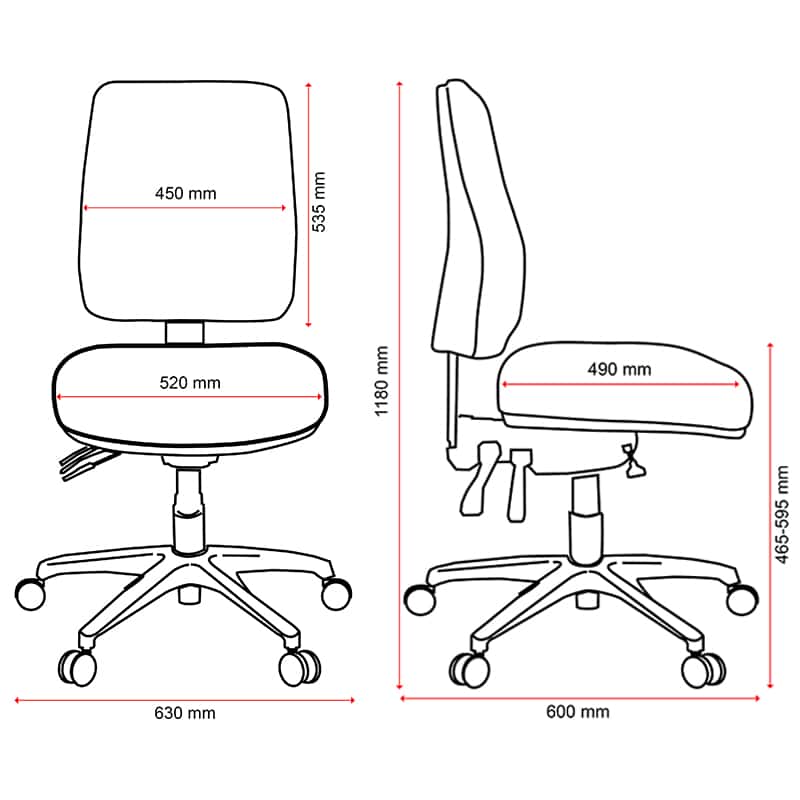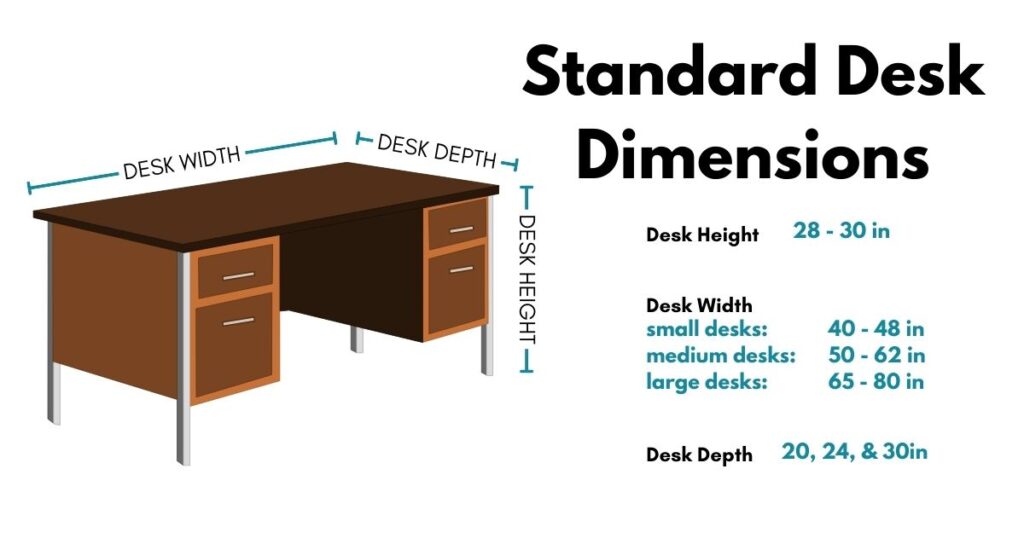Understanding Standard Desk Chair Width

A comfortable and ergonomic desk chair is essential for maintaining good posture and preventing discomfort during long hours of sitting. Choosing a chair with the appropriate width is crucial for achieving this, as it directly impacts your overall comfort and well-being.
Standard Desk Chair Widths
The standard width of a desk chair varies depending on the manufacturer and model. However, a common range for standard desk chairs is between 18 and 22 inches. This range caters to a wide variety of body sizes, ensuring adequate support and freedom of movement.
- 18 inches: This width is suitable for individuals with smaller frames or those who prefer a more compact seating experience. It provides adequate support for the hips and thighs while allowing for comfortable armrests.
- 20 inches: This width is considered the standard for most desk chairs and accommodates a broader range of body sizes. It offers ample space for sitting comfortably without feeling cramped or restricted.
- 22 inches: This width is ideal for individuals with larger frames or those who prefer extra space for their legs and arms. It provides a more spacious seating experience, allowing for greater comfort and freedom of movement.
Desk Chair Width and Body Size
Choosing the right desk chair width is essential for maintaining proper posture and preventing discomfort. It’s important to consider your body size and shape when selecting a chair.
A chair that is too narrow can restrict your movement and lead to discomfort in your hips, thighs, and legs. Conversely, a chair that is too wide can cause you to slouch and strain your back.
- Individuals with smaller frames may find that a chair with a width of 18 inches provides adequate support and comfort.
- Individuals with average frames may find that a chair with a width of 20 inches is suitable for their needs.
- Individuals with larger frames may prefer a chair with a width of 22 inches or more to ensure adequate space and comfort.
Factors Influencing Desk Chair Width Selection: Standard Desk Chair Width

Choosing the right desk chair width is crucial for ensuring comfort, proper posture, and overall well-being. Several factors influence this decision, each playing a significant role in finding the perfect fit.
User Height and Weight
The user’s height and weight are primary considerations when selecting desk chair width. Taller individuals typically require wider chairs to accommodate their longer legs and broader shoulders. Similarly, heavier individuals may need wider chairs to provide adequate support and prevent discomfort.
Preferred Sitting Posture
The way a person prefers to sit significantly impacts the required desk chair width. Individuals who prefer to sit with their legs spread apart might require a wider chair than those who prefer to sit with their legs together. Additionally, those who tend to lean forward while working may need a wider chair to ensure adequate legroom and prevent strain on their back.
Desk Chair Width and Legroom
Desk chair width directly affects legroom. Insufficient legroom can lead to discomfort, restricted blood flow, and potential back pain. A chair with adequate width provides ample space for the legs to stretch out comfortably, reducing pressure points and promoting good circulation.
Desk Chair Width and Armrest Positioning, Standard desk chair width
Armrest positioning is closely tied to desk chair width. Wider chairs allow for wider armrests, which can be adjusted to provide optimal support and reduce strain on the shoulders and wrists. Conversely, narrow chairs may restrict armrest positioning, potentially leading to discomfort and poor posture.
Potential Risks of Inappropriate Desk Chair Width
Choosing an inappropriate desk chair width can lead to several risks, impacting comfort, health, and productivity.
- Discomfort and Pain: A chair that is too narrow can restrict legroom, causing discomfort and pain in the legs, hips, and back. Conversely, a chair that is too wide can make it difficult to reach the desk and keyboard, leading to strain on the shoulders and neck.
- Poor Posture: An ill-fitting chair can force users into awkward postures, leading to back pain, neck strain, and carpal tunnel syndrome. A chair with the right width encourages good posture, promoting spinal alignment and reducing the risk of musculoskeletal problems.
- Reduced Productivity: Discomfort and pain caused by an inappropriate desk chair width can significantly reduce productivity. When users are constantly adjusting their posture or experiencing discomfort, their focus and concentration are compromised, leading to decreased efficiency.
Desk Chair Width and Workspace Design

The width of your desk chair plays a crucial role in shaping the overall design and functionality of your workspace. Choosing the right chair width ensures comfortable seating, efficient use of space, and a visually appealing environment.
Desk Chair Width and Desk Size
The width of your desk chair directly impacts the required desk size. A wider chair necessitates a larger desk to accommodate it comfortably, while a narrower chair allows for a more compact desk setup.
| Desk Chair Width | Recommended Desk Depth | Workspace Layout Considerations |
|---|---|---|
| 18-20 inches | 24-26 inches | Suitable for smaller workspaces, allows for a more compact layout, but may limit desk accessories and movement space. |
| 22-24 inches | 28-30 inches | Provides ample space for comfortable seating and movement, suitable for standard workspaces, allows for desk accessories and additional workspace. |
| 26-28 inches | 32-34 inches | Ideal for larger workspaces, provides ample legroom and movement space, suitable for multiple monitors or large desks. |
Impact of Desk Chair Width on Workspace Functionality
A wider desk chair can enhance the functionality of your workspace by providing ample legroom and movement space, allowing for greater comfort and ease of movement. It also allows for a larger desk surface, accommodating multiple monitors, desk accessories, and other necessary items. However, a wider chair can also limit the available space for movement around the desk, potentially hindering workflow and creating a cramped feeling.
Impact of Desk Chair Width on Workspace Aesthetics
The width of your desk chair contributes to the overall aesthetics of your workspace. A wider chair can create a more imposing and luxurious feel, especially when paired with a larger desk. However, a wider chair can also make a small workspace appear crowded and cramped. On the other hand, a narrower chair can create a more minimalist and streamlined look, particularly in smaller workspaces.
Standard desk chair width is usually around 20-22 inches, but if you’re looking for something a bit more luxurious and stylish, you might want to check out a faux leather swivel desk chair. These chairs often have wider seats and more padding, which can be a real game-changer for comfort and support, especially if you spend a lot of time sitting at your desk.
Most standard desk chairs have a width of around 20 inches, which is usually enough for most people. But if you’re looking for a chair that offers more room, the Swinton Avenue trading desk chair is a great option. It’s wider than most standard chairs, so you’ll have plenty of space to spread out and get comfortable.
Plus, it’s designed to be super supportive, so you can sit for hours without feeling any aches or pains.